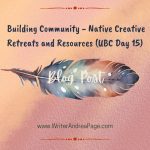American Indian Case Study
Continued… Part 4 Results
There were several issues at the turn of the century, but there are three most urgent ones to discuss. The traditional Sioux way of life was gone, along with the buffalo. And, to make matters worse, children were taken off to boarding school to be assimilated into the white culture. They were not allowed to speak in their own language freely.
Thankfully, some people stepped up to help preserve these important aspects of Native American Indian culture. They probably didn’t know their legacy at the time, but if they didn’t do what they did, these important parts of Sioux culture may have been lost forever.
1- The Buffalo
In the winter of 1881, the last buffalo hunt was underway on the Cheyenne River Reservation. A man named Fred Dupree participated in the hunt that killed nearly 2,000 buffalo. However, realizing the near extinction of the animal, Fred decided in the spring to send out men to locate and capture some buffalo calves. As a result, five calves survived the roundup and were raised on Dupree’s ranch.
By 1898, the herd had grown to nearly 80 head, when a man named James “Scotty” Philip bought the herd following Dupree’s death. Scotty and his men drove the herd to his ranch and the buffalo numbers increased. Scotty managed to grow the herd to nearly 1,000 head. He died in 1911, and 36 buffalo were sold to Custer State Park, where the herd size rose to around 2,500 by the 1960s. The park has supplied an estimated 17,000 buffalo for auction over several decades. The American Bison were saved from extinction.
An interesting side note: according to an article in the Rapid City Journal, both Fred Dupree and Scotty Philip had Native American Indian wives. Their family members credit these Lakota women, Mary Good Elk Woman and Sarah Larribee Philip, with the idea of saving the buffalo that were sacred to their culture. Their descendants believe these women persuaded their husbands to preserve the buffalo herds.
Additional Resources:
“Two Families Crucial to Saving American Bison” by Patrick Springer, Rapid City Journal, October 12, 2009 click here
Black Hills Visitor “James (Scotty) Philip, Saving the Buffalo” click here
Tri-State Livestock News “Scotty Philip: Saving the Buffalo” click here
Saving History
2- Eli Ricker
At the turn of the century, a man named Eli Ricker lived in Nebraska. Mr. Ricker studied law, ran for political office and lost, ran for county judge and won. He served out his two years and didn’t run again. He became a landowner and a rancher with his sone around 1904. At that time he was also an editor for a newspaper called the Chadron Times. He was over 60 years of age and developed an interest in Indian history…from the Native American Indian point of view. He recognized that the battles and wars of the late 1800s would have devastating effects on American Indians. He didn’t want to lose their stories of their lives in the late 1800s.
Mr. Ricker visited a school on the Pine Ridge Reservation. He wrote and reported about the “slaughter” at Wounded Knee in 1890. He wanted to write more from the American Indian perspective. He “had the audacity to suggest that history as seen from the Native American point of view was valid as the white man’s history.” [Voices of the American West, Vol. I, Introduction]
Ricker strongly believed in the Native American’s side of the story and interviewed 50 people about life on the Plains as well as the changing and turbulent times at the end of the century. These interviews provide first hand accounts of battles and other events from the Native American perspective, a valuable source in American History.
3- South Dakota Oral History Project
Similarly, another collection provided first hand accounts and insight about Native American Indian culture, challenges, changing lifestyles, war, etc. The South Dakota Oral History Project, funded in 1967 by Doris Duke, allowed researchers at the University of South Dakota at Vermillion begin interviewing subjects. The researchers let the subjects talk and tell their stories about their lives, traditions, wars, spirit and values, etc. it is so important to have people share their stories and their wisdom so audiences can hear them speak about what is important to them.
These are just a few people who cared enough to think ahead and protect the most valuable resources possible.
Summary
I’m so glad these people took the time to listen and collaborate with others. Together, the Dupree family and the Phililp family saved some of the buffalo herds. By doing this, a portion of the traditional Sioux culture was protected and preserved. By recording oral histories, as Ricker and the researchers did, specific details about the values of fortitude, bravery, generosity, and wisdom were saved and can be handed down from one generation to another. The oral interviews let their stories come to life. One can hear the warrior spirit awakened in the elders that were interviewed. It is that warrior spirit that drove many men into serving our country during World War I and World War II … some in a unique way.
<< >>
- Read SCT of WWII Kirkus Review here.
- Check out my book Sioux Code Talkers of World War II coming March 1, 2017, published by Pelican Publishing. Click here for more details.
- Be a friend – Share a post!
- Please leave a comment and let me know I’m not talking to myself 🙂















